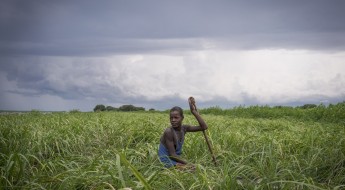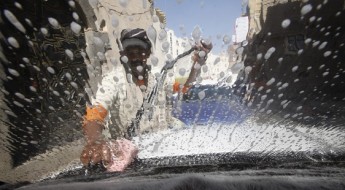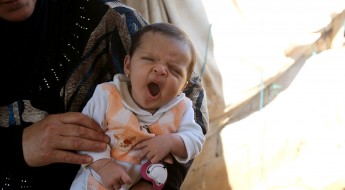Childhood interrupted: Conflict’s toll on Yemen’s children
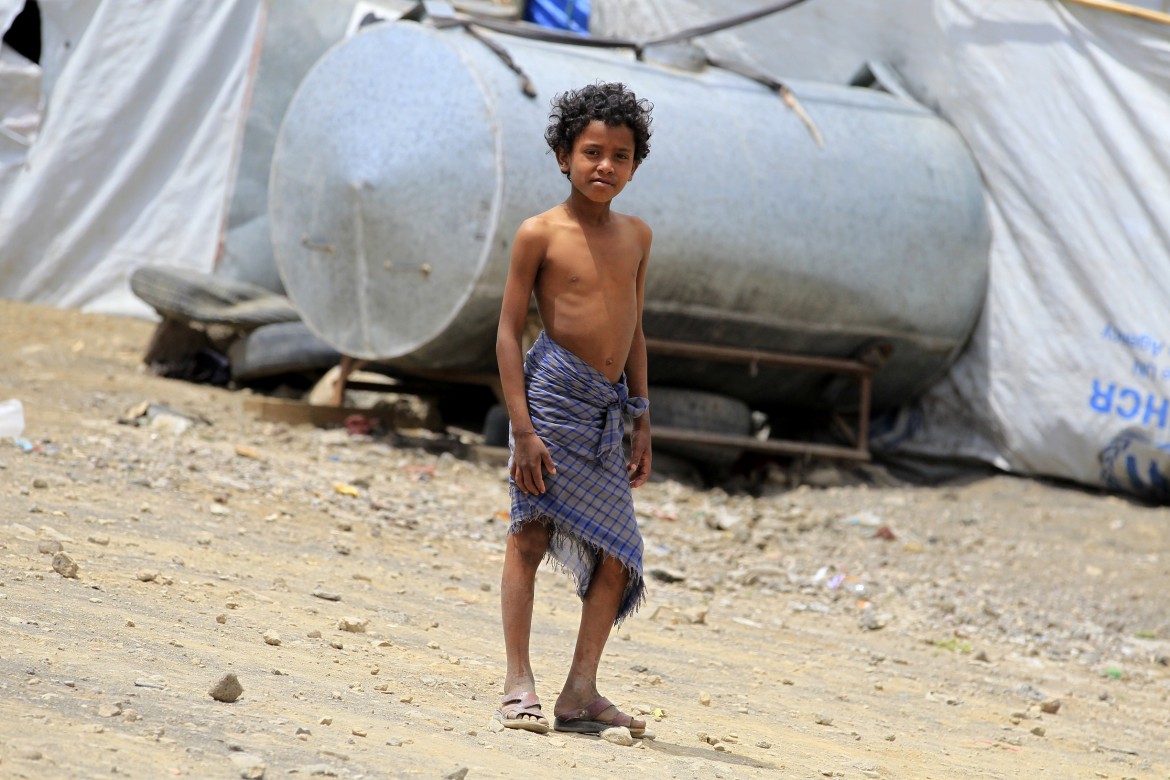 DisplacementYaser Mohammed is 13 years old and from Sa’ada, in north-western Yemen. The only clothes he owns are some shirts and a pair of trousers, which his mother rewashes constantly. Often, he only has a shawl to wear, which he wraps around his waist. The conflict forced him to leave school three years ago and work to support his family. Now he collects plastic bottles for resale, supporting his family of seven people with the money he makes. His family lives at a make-shift shelter for internally displaced people in the Dharwan district, north of the capital Sana’a. The United Nations estimates that 83% of those who are internally displaced and who return to their areas of origin are women and children (OCHA figures).Yahya ARHAB / ICRC
DisplacementYaser Mohammed is 13 years old and from Sa’ada, in north-western Yemen. The only clothes he owns are some shirts and a pair of trousers, which his mother rewashes constantly. Often, he only has a shawl to wear, which he wraps around his waist. The conflict forced him to leave school three years ago and work to support his family. Now he collects plastic bottles for resale, supporting his family of seven people with the money he makes. His family lives at a make-shift shelter for internally displaced people in the Dharwan district, north of the capital Sana’a. The United Nations estimates that 83% of those who are internally displaced and who return to their areas of origin are women and children (OCHA figures).Yahya ARHAB / ICRC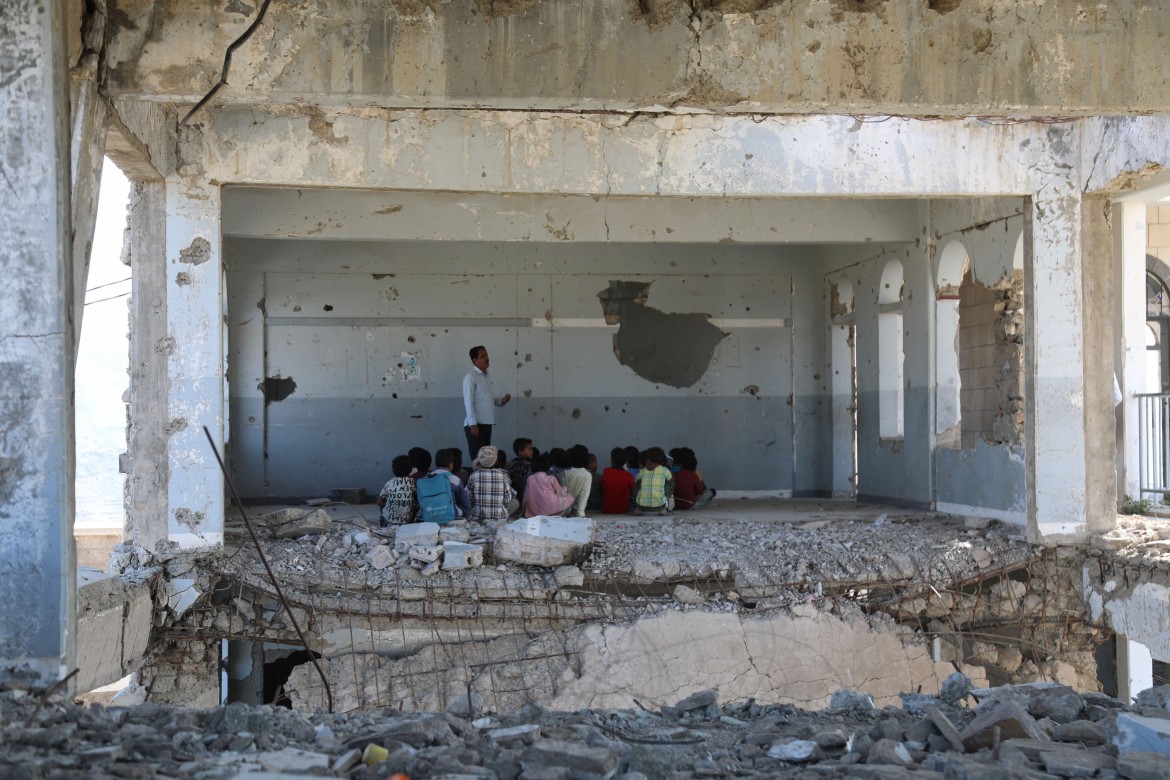 Compromised educationWith an estimated two million children out of school and more than 2,000 schools damaged or destroyed by the war, according to the United Nations, education has become difficult to access for many. A generation is being lost as opportunities to open their horizons are fading away. A compromised education today means a narrower path towards future jobs and opportunities that would allow these children to avoid being trapped in menial work. The space to have a normal childhood, full of play, stability and routine, is gone. The destruction of schools, which are more than just four walls in which children get an education, has also destroyed the space where many children cemented life-long friendships.Ahmed ALBASHA / ICRC
Compromised educationWith an estimated two million children out of school and more than 2,000 schools damaged or destroyed by the war, according to the United Nations, education has become difficult to access for many. A generation is being lost as opportunities to open their horizons are fading away. A compromised education today means a narrower path towards future jobs and opportunities that would allow these children to avoid being trapped in menial work. The space to have a normal childhood, full of play, stability and routine, is gone. The destruction of schools, which are more than just four walls in which children get an education, has also destroyed the space where many children cemented life-long friendships.Ahmed ALBASHA / ICRC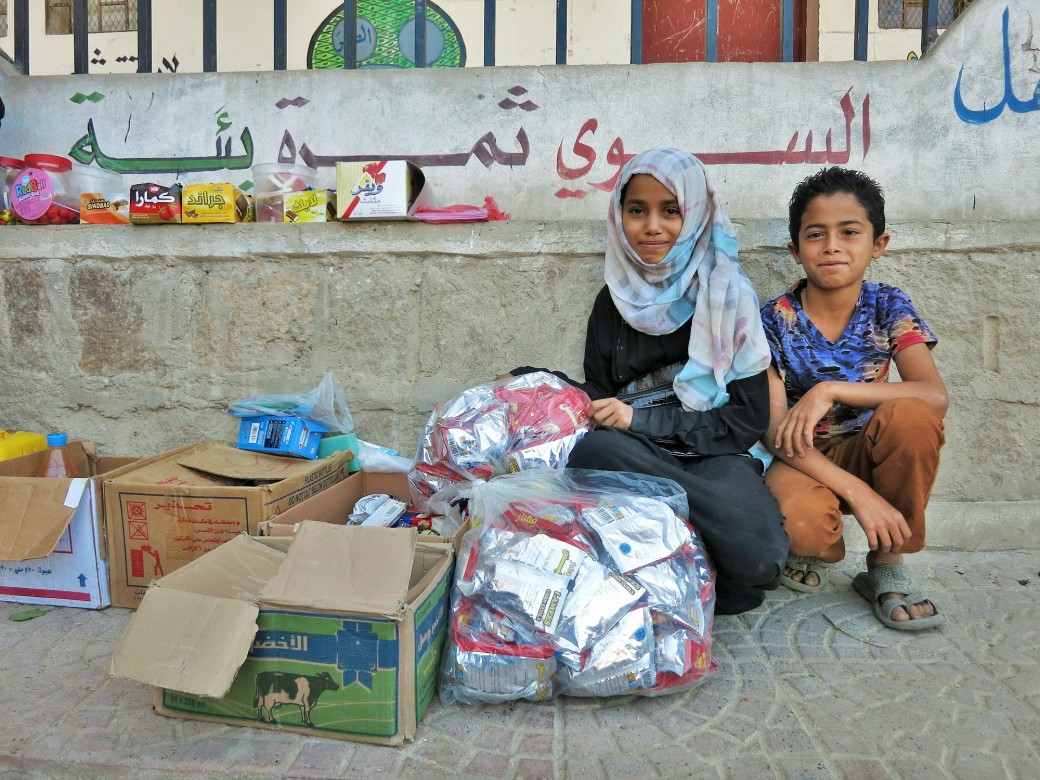 Children become breadwinnersConflicts force children to grow up earlier than they should. They often become the breadwinners, having to work or ending up on the streets begging. Their education is often interrupted, their play time curtailed, their childhood irrevocably altered.Qusai ALMOAYED / ICRC
Children become breadwinnersConflicts force children to grow up earlier than they should. They often become the breadwinners, having to work or ending up on the streets begging. Their education is often interrupted, their play time curtailed, their childhood irrevocably altered.Qusai ALMOAYED / ICRC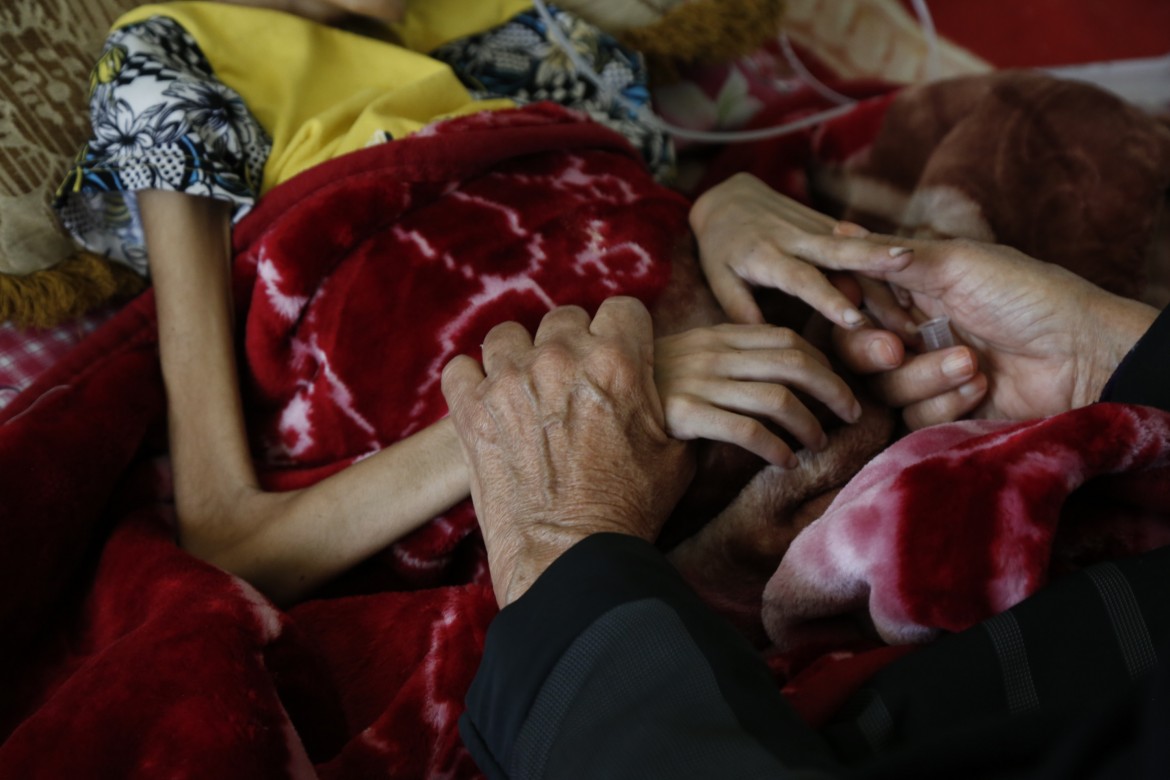 MalnourishmentIt’s estimated that 3.2 million children and women are acutely malnourished in Yemen, with 50% of all children experiencing irreversible stunted growth. Yemen’s catastrophic humanitarian situation means an estimated 7.4 million children need humanitarian assistance, according to OCHA.Mohammed HAMOUD / ICRC
MalnourishmentIt’s estimated that 3.2 million children and women are acutely malnourished in Yemen, with 50% of all children experiencing irreversible stunted growth. Yemen’s catastrophic humanitarian situation means an estimated 7.4 million children need humanitarian assistance, according to OCHA.Mohammed HAMOUD / ICRC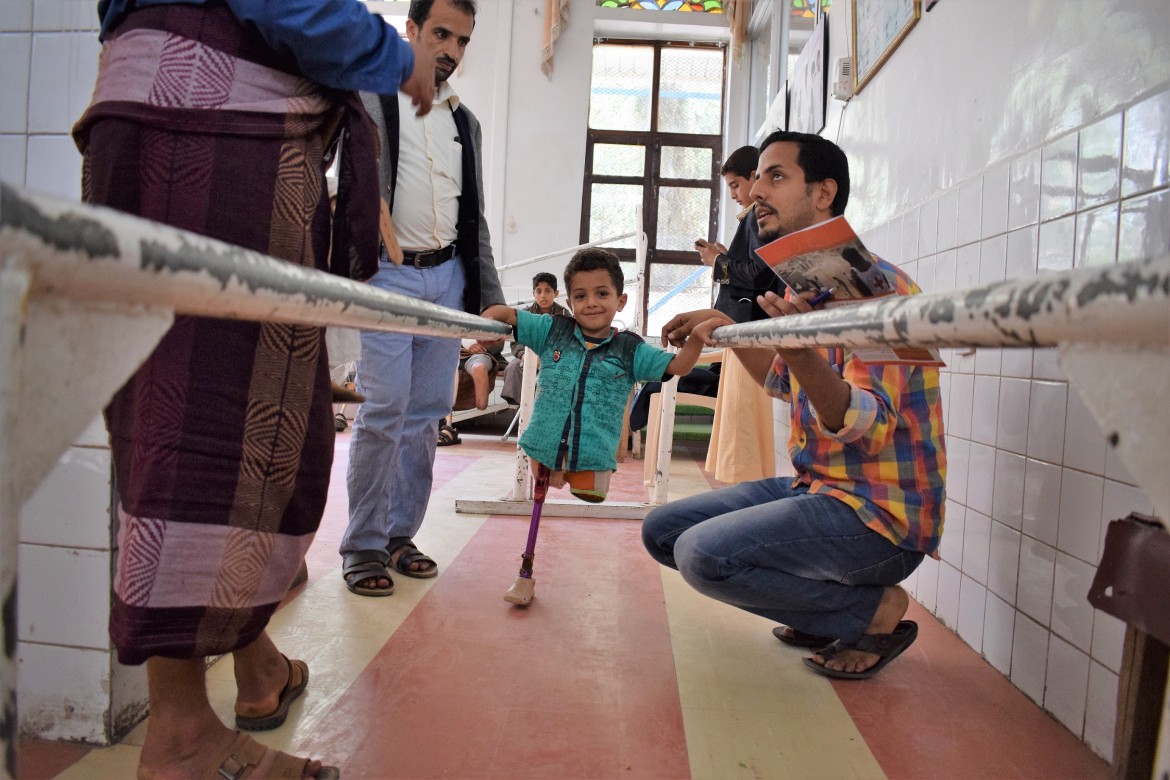 Physical disability38% of patients in ICRC-supported rehabilitation centers are children who require prosthetic and orthotic services, due to loss of or severe injury to their limbs. As the frontlines shift and expand, more land becomes contaminated by unexploded ordnance (UXOs) and landmines. Children are particularly affected, as they often pick up these UXOs, mistaking them for toys.Qusai ALMOAYED / ICRC
Physical disability38% of patients in ICRC-supported rehabilitation centers are children who require prosthetic and orthotic services, due to loss of or severe injury to their limbs. As the frontlines shift and expand, more land becomes contaminated by unexploded ordnance (UXOs) and landmines. Children are particularly affected, as they often pick up these UXOs, mistaking them for toys.Qusai ALMOAYED / ICRC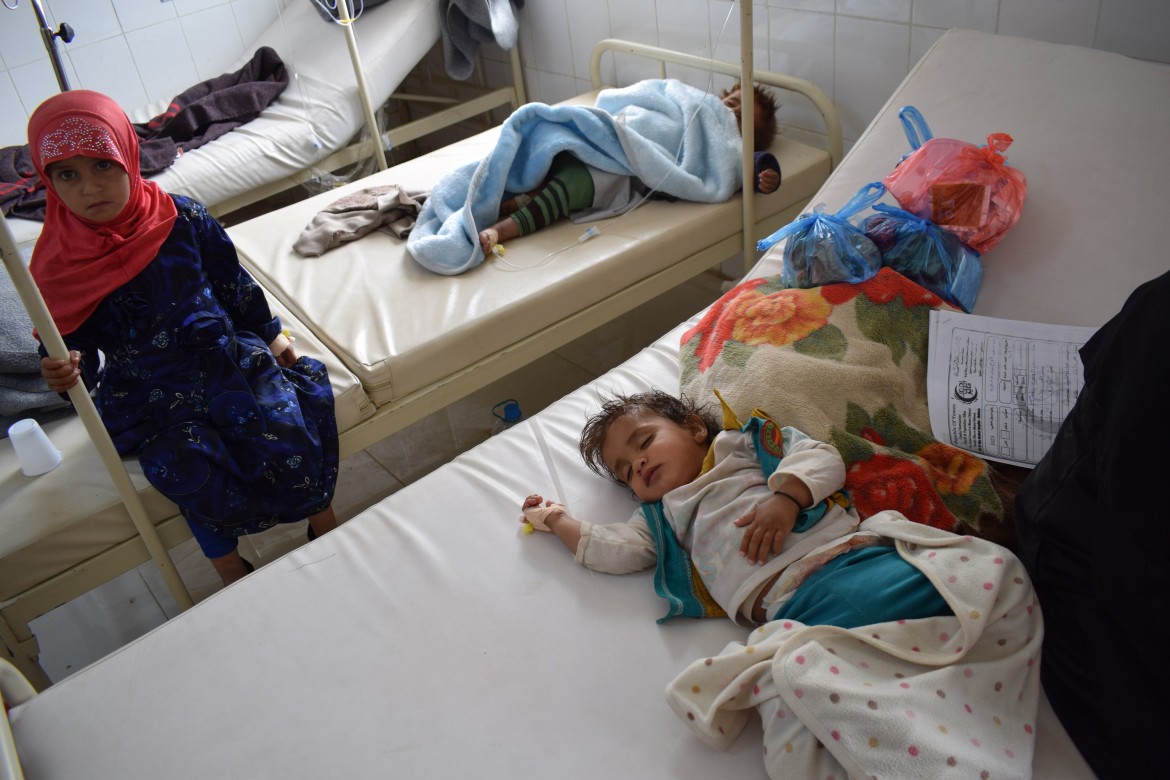 CholeraYemen has had more than 200,000 suspected cholera cases in children and at least 193 cholera related deaths, according to Save the Children. The crumbling infrastructure and lack of proper sanitation is leading to the spread of this otherwise preventable disease. New waves of cholera emerge with the rainy season every summer.Taoffic TOURE / ICRC
CholeraYemen has had more than 200,000 suspected cholera cases in children and at least 193 cholera related deaths, according to Save the Children. The crumbling infrastructure and lack of proper sanitation is leading to the spread of this otherwise preventable disease. New waves of cholera emerge with the rainy season every summer.Taoffic TOURE / ICRC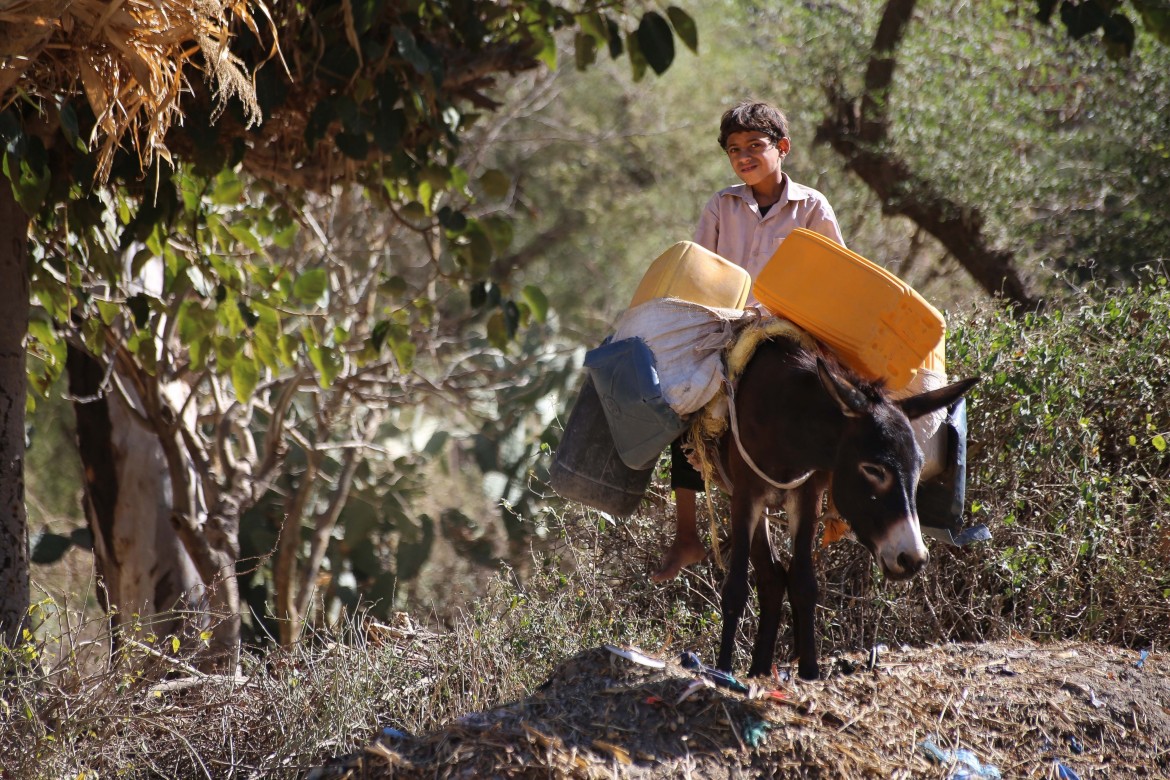 Water scarcityRoughly 17.8 million people in Yemen lack access to safe water and adequate sanitation services, because of the conflict’s toll on infrastructure. Now even the young must fend for themselves. The sight of children carrying jerrycans on water runs is now a familiar sight in many cities across Yemen.Ahmed ALBASHA / ICRC
Water scarcityRoughly 17.8 million people in Yemen lack access to safe water and adequate sanitation services, because of the conflict’s toll on infrastructure. Now even the young must fend for themselves. The sight of children carrying jerrycans on water runs is now a familiar sight in many cities across Yemen.Ahmed ALBASHA / ICRC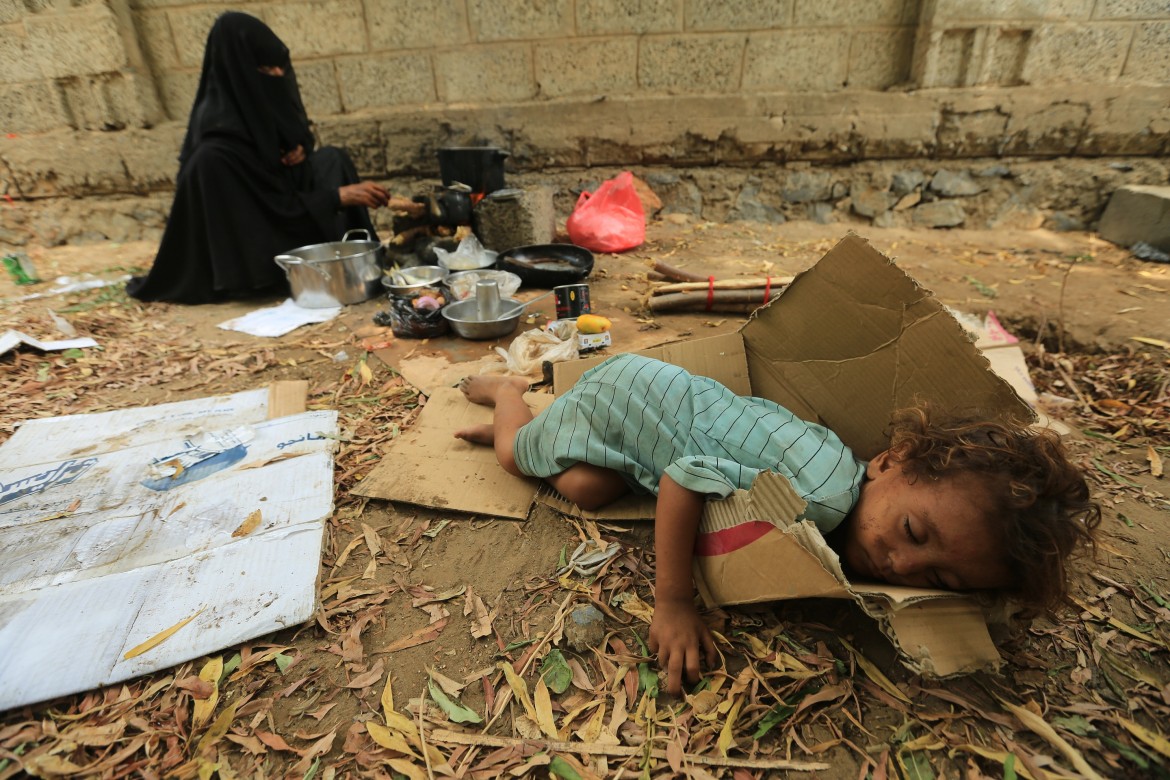 Family separationConflict, natural disasters, and migration can lead to the separation of family members. Some go missing and are never heard of again. For children, the loss of family life, and the security that parents and siblings provide, is devastating. Also, if they lose a breadwinner, they must then survive on their own. In displacement settlements in Yemen, there are at least 1200 unaccompanied and separated children (Multi-Cluster Location Assessments for 2018). For those separated from their families, not knowing the fate of a family member makes it very difficult to move on and lead a normal life. They will always be looking for them and hoping for their return.Abduljabbar ZEYAD / ICRC
Family separationConflict, natural disasters, and migration can lead to the separation of family members. Some go missing and are never heard of again. For children, the loss of family life, and the security that parents and siblings provide, is devastating. Also, if they lose a breadwinner, they must then survive on their own. In displacement settlements in Yemen, there are at least 1200 unaccompanied and separated children (Multi-Cluster Location Assessments for 2018). For those separated from their families, not knowing the fate of a family member makes it very difficult to move on and lead a normal life. They will always be looking for them and hoping for their return.Abduljabbar ZEYAD / ICRC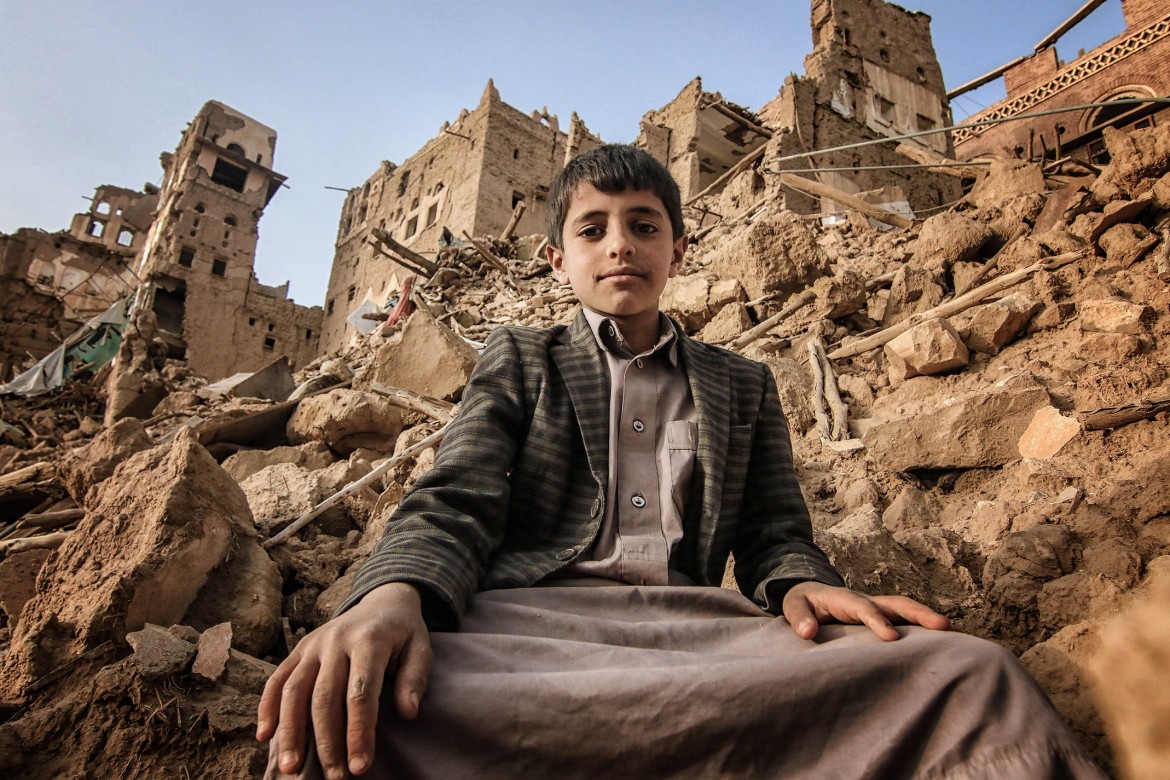 Witnessing and experiencing violenceChildren in Yemen suffer violations of their most basic rights daily. The range of violence they are confronted with spans from witnessing violent acts of death and destruction, to being killed, injured, recruited into armed groups, exploited through labor, child marriage, and trafficking. The effect on children’s psychological well-being is severe. Many face nightmares, sleeping disorders, guilt, changed social behaviors, among others. Their daily life is disrupted, their sense of stability is gone and their fears for the future overwhelming.Al-Karar ALMOAYED / ICRC
Witnessing and experiencing violenceChildren in Yemen suffer violations of their most basic rights daily. The range of violence they are confronted with spans from witnessing violent acts of death and destruction, to being killed, injured, recruited into armed groups, exploited through labor, child marriage, and trafficking. The effect on children’s psychological well-being is severe. Many face nightmares, sleeping disorders, guilt, changed social behaviors, among others. Their daily life is disrupted, their sense of stability is gone and their fears for the future overwhelming.Al-Karar ALMOAYED / ICRC
What happens to the innocence of childhood during war?
It becomes suffocated by struggles and suffering that are all too visible. You see it on the streets, where children pull their jerrycans behind them, scouting for water; you see it in destroyed schools as children try to learn amid the ruins; you see it in shops and other places where children scrape a living through menial jobs, just to survive. Above all, you see it in their eyes, now haunted by the violence they have witnessed and experienced.
Yemen’s conflict has seeped into every aspect of children’s lives there and has taken a huge toll. Here, we turn the camera on some of their stories, knowing that for every child we have spoken to, there remain many more whose stories are yet to be told.

